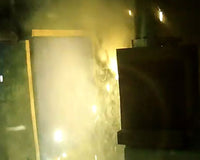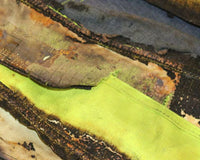Filtering half masks designed in accordance with the EN 149 standard protect the wearer from airborne particles. Offering protection against solid, liquid, and oil-based particles, these filtering half masks can offer respiratory protection in a variety of environments where the wearer may be exposed to airborne particles.
The EN 149 standard
EN 149 is a European standard for respiratory protective devices that specifies the ability for filtering half masks to protect against particles.
This safety standard specifies the minimum requirements and test methods for filtering half masks based on their ability to protect against solid and liquid aerosol particles.
Respirators designed to the EN 149:2001 standard (the latest EN 149 update) shall offer varying degrees of protection against solids, water based aerosols, and oil based aerosols, based on their filter efficiency.
EN 149:2001
The latest version of BS EN 149 is EN 149:2001.
This standard differs from the previous EN 149:1991 standard in that it is mandatory for all products tested to EN 149:2001 to provide protection against solid and liquid aerosols. The previous EN 149:1991 standard allows for the testing of respirators against solid aerosols only, as well as solid and liquid aerosols.
On 1 August 2010, the EN 149:2001 standard was amended to introduce markings that specify the reusability of masks’ dust filters, indicated by “R” for reusable, and “NR” for non-reusable. This standard amendment is referred to as EN 149:2001 + A1:2009.
EN 149 requirements and test methods
The EN 149 requirements and test methods ensure that EN 149 certified half masks are designed to protect against airborne particles, such as dust, smoke, and aerosols.
EN 149 sets several requirements that filtering half masks must be tested against to ensure they provide effective protection and performance for filtering. These requirements cover filtration efficiency, breathing resistance, and fit.
Some of the test methods set by EN 149 includes the assessment of:
- Cleaning and disinfection
- Leakage
- Compatibility with skim
- Penetration of filter material
- Field of vision
- Breathing resistance
There are many more tests conducted under EN 149 to ensure the respiratory protective device offers the required level of protection against participles.
The outcome of the EN 149 test methods are used to determine the allocated class.
EN 149 classes
EN 149 specifies 3 classes of protection for filtering half masks based on the filter efficiency provided by the respirator: FFP1, FFP2, and FFP3 whereby FFP3 represents respirators with the highest level of filter efficiency. These classes are assigned based on the assigned protection factor (APF), the filter penetration limit, and the inward leakage.
|
Class |
APF (Assigned Protection Factor) |
Filter penetration limit (at 95 L/min air flow) |
Inward leakage |
|
FFP1 |
4 |
Filters at least 80% of airborne particles |
<22% |
|
FFP2 |
10 |
Filters at least 94% of airborne particles |
<8% |
|
FFP3 |
20 |
Filters at least 98% of airborne particles |
<2% |













